“The Fateful Dilemma" by Gordon Christiansen, Professor of Chemistry, Connecticut College (1961)5/26/2022
Through the last few months of 1960 and into the early summer of 1961, US antiwar activists noticed something strange about some of the national news articles regarding the nuclear arms race. Since 1958, both the United States and the Soviet Union had held a moratorium on nuclear weapons testing — the most significant victory for the peace movement up to that point. It was far from perfect, but the compromise had kept tensions between the two countries relatively low until April 1961, when the United States attempted to invade communist Cuba in the infamous Bay of Pigs fiasco. Even before the failed invasion of Cuba, however, national media in the United States had been regularly publishing stories and opinions that made the resumption of weapons testing seem necessary and almost inevitable. Public opinion, it appeared, was being actively shaped into what Noam Chomsky later called “manufactured consent.” Noticing this disturbing trend, one member of the New England Committee for Nonviolent Action (CNVA), vividly described this manipulation of public opinion and what must be done about it in the June, 1961 edition of the New England CNVA newsletter. The author, Gordon Christiansen, was a respected chemistry professor and chair of his department at Connecticut College who had become increasingly involved in the peace movement. While many of the CNVA members had come to the area just a year earlier, Christiansen was already a local resident — giving some extra clout to the CNVA message in eastern Connecticut. Christiansen’s analysis of what he called “public opinion molding” shows a clear and steady escalation of public rhetoric, preemptively justifying the invasion of Cuba and, after suffering the military humiliation at the Bay of Pigs, continuing to justify even more aggressive behavior to save face. While no one could have known it at the time, this progressively escalating chain of events would lead to the Cuban Missile Crisis the next year — the moment when the United States and Soviet Union came closest to fighting an open nuclear war. Today, we are again seeing national media “soften” the public to the idea that the deployment of Russian nuclear weapons may be inevitable, implicitly justifying the use of our own nuclear arsenal. This must not continue, lest we face our own version of the Cuban Missile Crisis — and this time, with less competent, less ideal-driven leaders on either side of the conflict. In 1961, Christiansen called for a massive, national action to protest the expiration of the testing moratorium and to call for greater restrictions to the arms race. And, for once, the movement could make their case before the government had committed to the wrong course. Today, we, too, find ourselves in a world divided by powerful and ideologically opposed superpowers, all inching almost imperceptibly toward a reality in which nuclear weapons are openly used in war. Once we cross that line, there may be no going back; indeed, after the bombs explode and the dust settles, there may not be anything left to go back to. (Click the image below to download the PDF version of the original clipping) —
Take Action The CT Committee for the Prohibition of Nuclear Weapons organizes pro-disarmament demonstrations throughout the year. To participate in these demonstrations against nuclear arms and in support of the UN’s Treaty on the Prohibition of Nuclear Weapons, please get in touch with us on Facebook at facebook.com/voluntownpeacetrust or email us at [email protected]. — Support Us If you like our weekly posts, please consider supporting this project with a one-time or recurring donation. Contributions of all sizes are appreciated. Click this link to learn more about what we do and how you can donate: https://www.mightycause.com/organization/Voluntown-Peace-Trust — Source Christiansen, Gordon. “The Fateful Dilemma.” Polaris Action Bulletin. 29 June 1961 (Bulletin #24), page 1. In 1961, the Peacemakers came to southeastern Connecticut to hold their fifth annual summer intensive training. It was an easy choice: the world’s first nuclear-armed submarines were being built in the area’s General Dynamics - Electric Boat facility; the Committee for Nonviolent Action (CNVA) had established a New England chapter over the past year there to continue protesting the submarine manufacturing; and they had already held their 1960 training in the area the year before. As a collaboration between two of the most active antiwar groups committed to nonviolent action in the country at the time, the 1961 Peacemakers summer training program was planned to be intensive, comprehensive, hands-on, creative, diverse in identities, globally-minded, and locally focused. The theme of the 1961 program explored the dynamics and tensions between the individualist and collectivist values within the movement — a prescient topic that is still relevant today. Indeed, the Peacemakers were in many ways always ahead of their time. While the peace movement is sometimes accused of being a predominantly white movement, it is worth noting that both of the 1961 Program Coordinators for the Peacemakers were Black with decades of direct activist experience between them: Sis Robinson and Wally Nelson. The program itself also called for a diverse mix of people to join: professors and writers, farmers and industrial workers, activists and organizers, folks from all walks of life. The program staff was composed of a similar mix of people, including local Connecticut College professor Dr. Gordon Christiansen and New England CNVA members Marj and Bob Swann. The first half of the program was to cover the Peacemakers’ antiwar analysis of the Cold War and how they could resist militarism even under such circumstances — topics that one might expect. But the second half of the program was to include topics that went much further: building the new world in the shell of the old, changing behaviors for a better society, even possibilities for revolution. As hinted earlier, the Peacemakers were not simply activists of their own time — they anticipated a mature, worldwide movement of nonviolent resistance to develop in the future. After all, Gandhi had nonviolently led India to liberation less than two decades earlier, Black civil rights leaders had been using similar strategies in the American South for years, and new forms of protest and direct action were being pioneered all over. This strong commitment to a revolutionary peace movement can be glimpsed in the radical topics to be explored, in the diverse membership of the two participating organizations, and in the highly structured daily schedule for the summer program. This wasn’t just learning; this was training. (Click the images below to download the PDF version of the original clipping) --
Take Action The CT Committee for the Prohibition of Nuclear Weapons organizes pro-disarmament demonstrations throughout the year. To participate in these demonstrations against nuclear arms and in support of the UN’s Treaty on the Prohibition of Nuclear Weapons, please get in touch with us on Facebook at facebook.com/voluntownpeacetrust or email us at [email protected]. — Support Us If you like our weekly posts, please consider supporting this project with a one-time or recurring donation. Contributions of all sizes are appreciated. Click this link to learn more about what we do and how you can donate: https://www.mightycause.com/organization/Voluntown-Peace-Trust — Source “5th Annual Peacemaker Training Program in Nonviolence.” Polaris Action Bulletin. 25 May 1961 (Bulletin #23), page 4. In the summer of 1960, the Committee for Nonviolent Action (CNVA), the most active antiwar group in the country at the time, came to New London, Connecticut to stage demonstrations and host workshops arguing against the nuclear arms race. They called it Polaris Action after the Polaris nuclear weapon submarines being built at the nearby General Dynamics facility, Electric Boat. Eight months after the summer activities had finished, a contingent of CNVA members was nearing the East Coast again, having walked all the way from San Francisco as demonstrators against the arms race and intending to walk across Europe to Moscow as well. In that same time, several other CNVA members had remained in southeastern Connecticut and established the New England chapter of the CNVA. In those months, they had set up an office with regular public hours, made considerable contacts with national media and at least one filmmaker, and had conducted countless speaking engagements and public demonstrations. Many members had been arrested for civil disobedience, some on multiple occasions, and several were still locked up. But they had made allies in the local community and further away, allies who could both help fill the gaps left by lost personnel and lend a degree of legitimacy with the local populace. Dr. Gordon Christiansen, chair of the Chemistry Department at Connecticut College, was one local resident who quickly joined the CNVA — within a short time, he was made Chairman of the Personnel Committee of the New England chapter. And so, as their fellow CNVA members walked ever closer, the New England chapter began to plan another round of summer programs against the arms race. The first part of the program is in many ways a continuation of the New England CNVA’s work from the previous several months. The last few days of May were dedicated to the rendezvous and send-off of the San Francisco to Moscow Walk Team in New York — a campaign that had been first dreamed up at the Hygienic Restaurant in New London just eight months earlier, and which was to be continued stateside by the New England team for a week and a half solidarity walk east across Long Island (ending with the ferry back to New London). A one-day workshop was scheduled for the week after they returned. Between the solidarity walk and the workshop, several court hearings and demonstrations were scattered throughout, giving the impression of a busy schedule for a very dedicated team. Published in late May 1961, it appears in the newsletter that the last part of June, all of July, and the first part of August had not yet been scheduled. For the end of the summer, the New England CNVA again partnered with the Peacemakers for an intensive 3-week training on nonviolent action and philosophy with a scope and breadth that may be surprising to some. We will explore the 1961 Peacemakers Training Program in the future. But the lack of more detailed plans for the middle of the summer was likely due to a desire to stay flexible to continuously developing situations, such as issues with the law as well as any opportunities for action that may arise. And besides, even between the protests, field trips, and workshops, for those who wanted to dedicate their summer to activism, or even for those who were just curious, there was always plenty to be done or learned or practiced. (Click the images below to download the PDF version of the original clipping) --
Take Action The CT Committee for the Prohibition of Nuclear Weapons organizes pro-disarmament demonstrations throughout the year. To participate in these demonstrations against nuclear arms and in support of the UN’s Treaty on the Prohibition of Nuclear Weapons, please get in touch with us on Facebook at facebook.com/voluntownpeacetrust or email us at [email protected]. — Support Us If you like our weekly posts, please consider supporting this project with a one-time or recurring donation. Contributions of all sizes are appreciated. Click this link to learn more about what we do and how you can donate: https://www.mightycause.com/organization/Voluntown-Peace-Trust — Source “Peace Education.” Polaris Action Bulletin. 25 May 1961 (Bulletin #23), page 5. “Summer Program.” Polaris Action Bulletin. 25 May 1961 (Bulletin #23), page 5-6. Last week, we shared some general descriptions of a wave of mass civil disobedience that swept through the US and UK in the Easter season of 1961. The demonstrators objected to the “civil defense drills” promoted by the US and UK governments, pointing out what a meager defense that duck-and-cover could provide in the face of a doomsday scenario that their own governments had started. Common people were forced into the role of pawns in a global chess match between the nuclear-armed powers, and some of those common people had had enough. (See our post from last week here: “Thousands in Civil Disobedience; Hundreds Arrested in US and England” (1961)) This week, we have a brief description of the largest civil defense protest in the US that season: the roughly 1500-strong civil disobedience action in New York City. The author of the article, Mary Meigs, had at the time only recently become involved with the New England Committee for Nonviolent Action (CNVA), having been introduced to the group by her partner Barbara Deming. Despite the relatively short time that Meigs was involved with the CNVA, she is especially notable for being the person to purchase Campbell Farm in Voluntown, Connecticut in 1962, which she gifted to the CNVA to ultimately become the Voluntown Peace Trust. Meigs’ description of the NYC civil defense protest is particularly evocative of the mood of such mass civil disobedience actions. A few details may seem familiar to those who have participated in similar demonstrations: the outsized number of police, the sudden and arbitrary mass arrests, the undercounting of participants by the press, and the many unanswered questions — but also the feeling of determination, solidarity, and even joy shared between the diverse participants. At the bottom of this clipping, there is a brief notice about the summer program organized by the New England CNVA. While CNVA member Brad Lyttle was the primary organizer of the summer program, others contributed to the project. One was the then-Chair of the Chemistry Department at Connecticut College, Dr. Gordon Christiansen, who also wrote a pamphlet on nuclear detonation scenarios in and around southeastern Connecticut (see this link to read his pamphlet: Survival in Nuclear War: A Vanishing Probability). We will return to Brad Lyttle and the 1961 New England CNVA summer program later. For now, let us reflect on all of the grassroots political activity that was swelling at the time. In the South, the civil rights movement was already picking up momentum. In the North, the movement against nuclear weapons and war in general was also gaining strength. Many elements of these movements would eventually merge, culminating with Dr. King’s powerful and controversial speech on the Vietnam War in April 1967. Already in 1961, these confluences were developing: campaigns like the Quebec to Gauntanamo Walk and the Southern Peace Walk addressed militarism and racism as interconnected issues. Still, in the midst of organizing civil disobedience actions, summer trainings, and the communications to coordinate all of this activity, people like Mary Meigs, Barbara Deming, Brad Lyttle, Gordon Christiansen, even Dr. King didn't know how their work would turn out. But despite their own uncertainties, something compelled them to keep pushing the movement forward. Let us follow in their footsteps and continue to push past where they left off. (Click the image below to download the PDF version of the original clipping) --
Take Action The CT Committee for the Prohibition of Nuclear Weapons organizes pro-disarmament demonstrations throughout the year. To participate in these demonstrations against nuclear arms and in support of the UN’s Treaty on the Prohibition of Nuclear Weapons, please get in touch with us on Facebook at facebook.com/voluntownpeacetrust or email us at [email protected]. — Support Us If you like our weekly posts, please consider supporting this project with a one-time or recurring donation. Contributions of all sizes are appreciated. Click this link to learn more about what we do and how you can donate: https://www.mightycause.com/organization/Voluntown-Peace-Trust — Source Meigs, Mary. “The Civil Defense Protest at City Hall Park.” Polaris Action Bulletin. 6 May 1961 (Bulletin #22), page 6. |
AuthorWrite something about yourself. No need to be fancy, just an overview. Archives
March 2023
Categories |
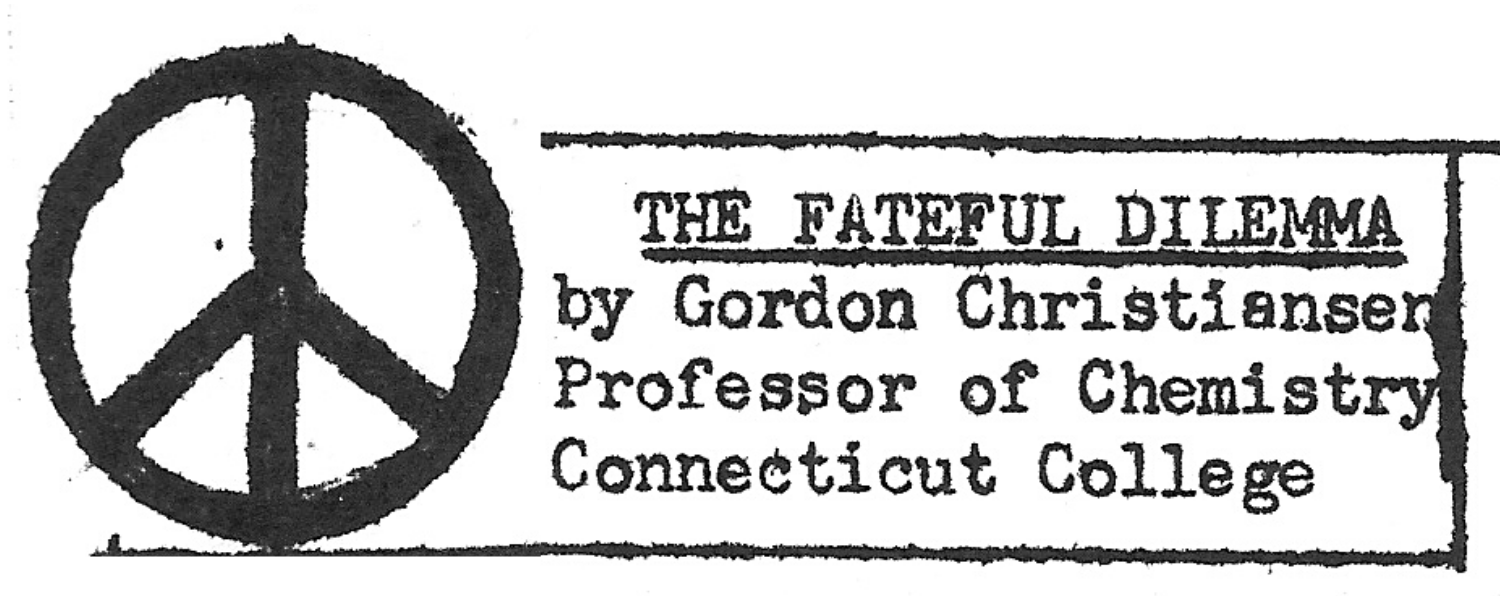
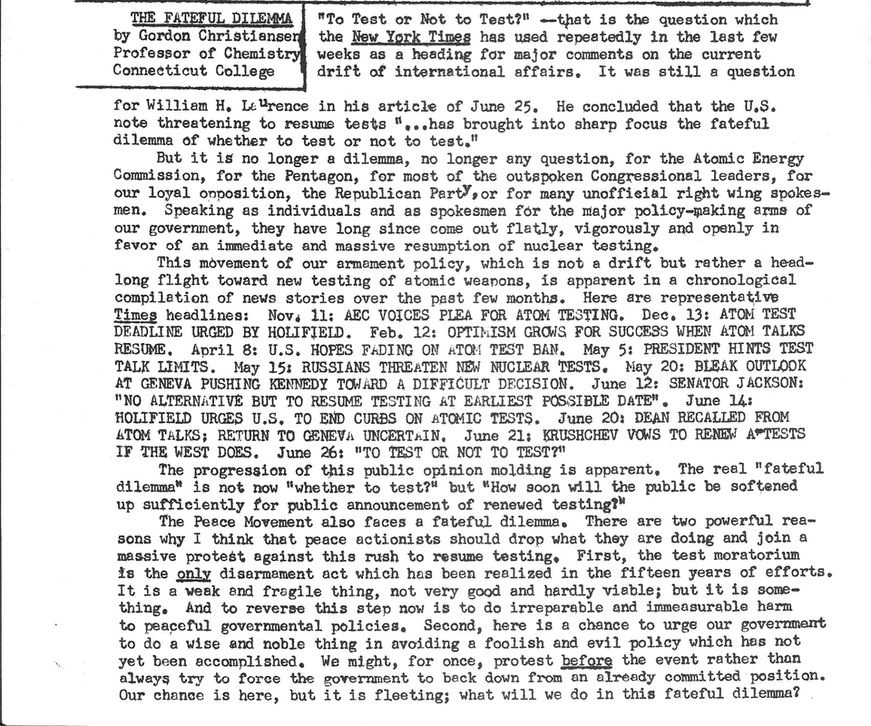
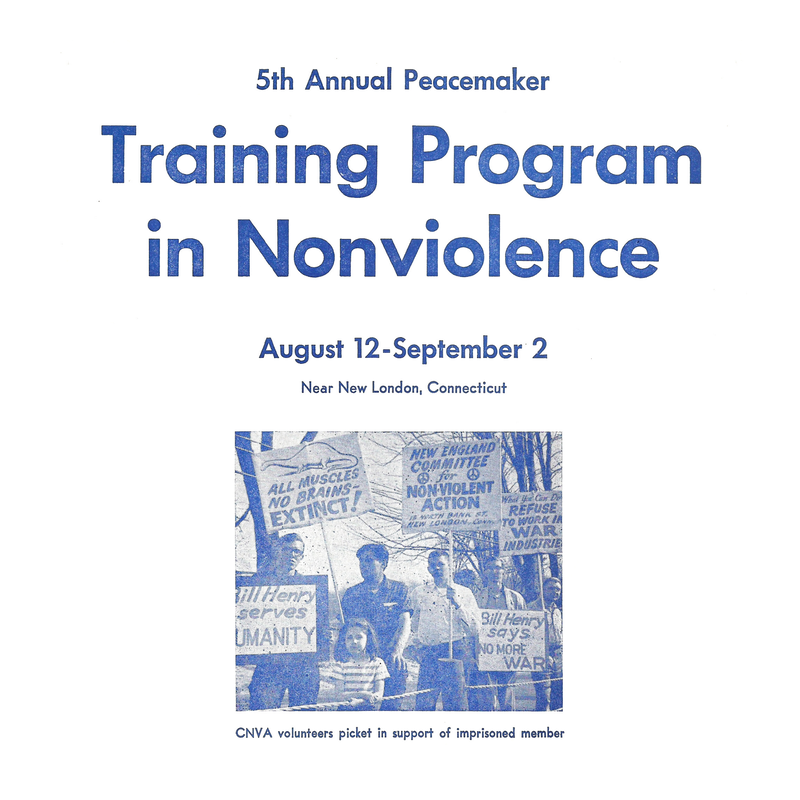

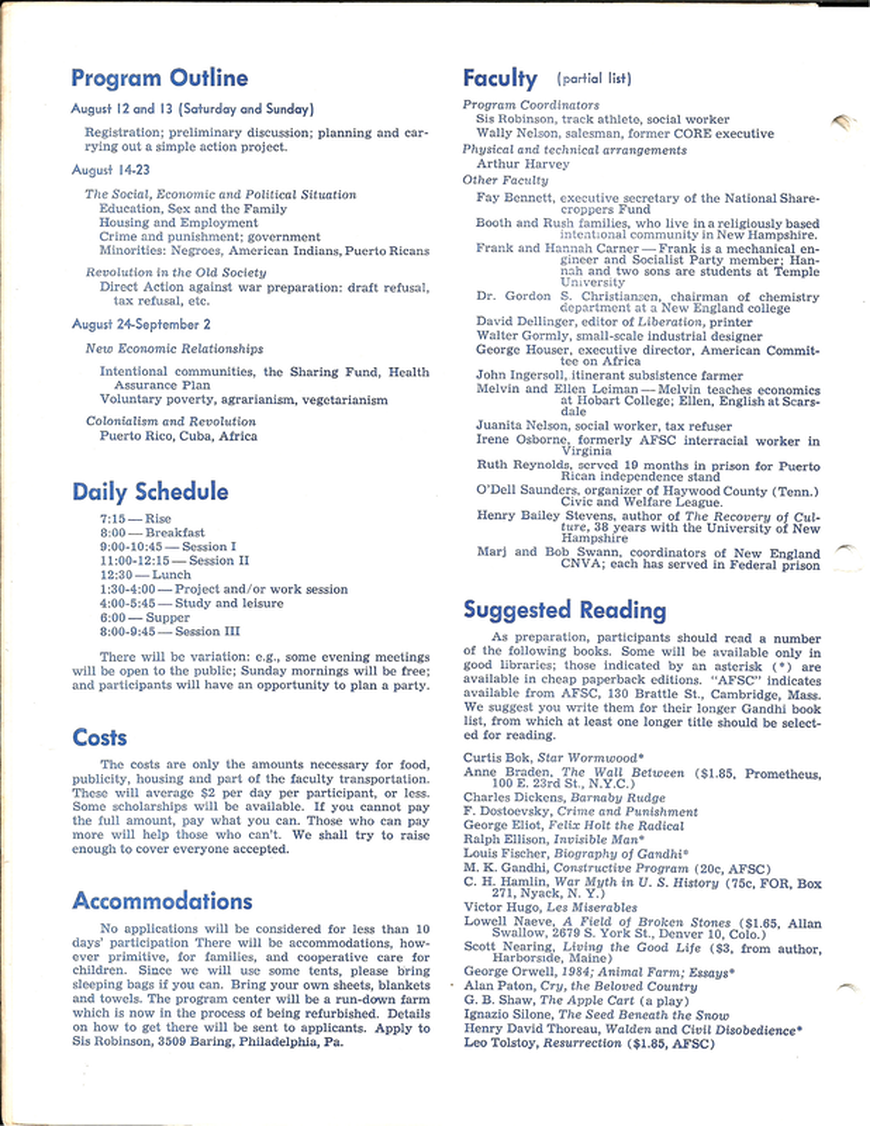



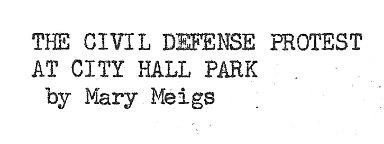
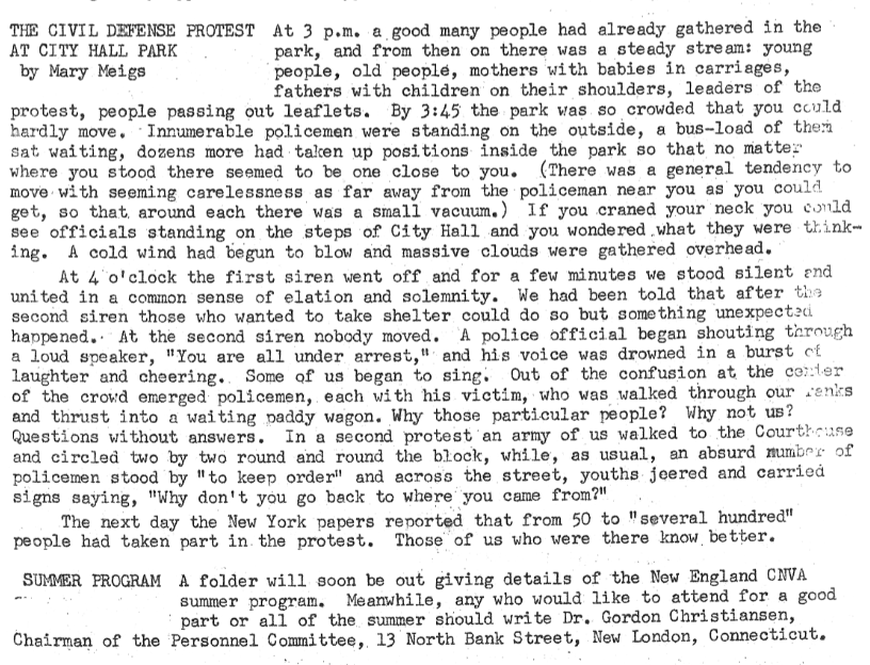
 RSS Feed
RSS Feed